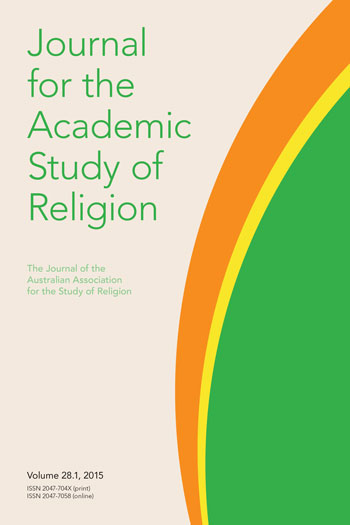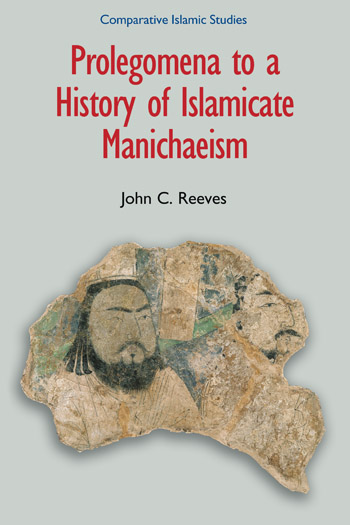Zarathustra and Zoroastrianism
Michael Stausberg [+–]
University of Bergen
Michael Stausberg is Professor of the Study of Religion at the University of Bergen and his publications include Zarathustra and Zoroastrianism, Religion and Tourism, Contemporary Theories of Religion (editor), and Theorizing Rituals (co-editor).
Translated by Margret Preisler-Weller
With a Postscript by Anders Hultgård
Zarathustra and Zoroastrianism offers a compact, concise and accessible survey of Zoroastrianism. This tiny religious community traces its root to Zarathustra, a prophet who lived some 2,500-3,500 years ago. Chapters address Zarathustra and the origins of the religion, religious concepts and narratives, ethics and gender, priesthoods and rituals, transitions and festivals. A postscript by Anders Hultgård, one of the leading experts on this field, discusses the influences of Zoroastrianism on Judaism, Christianity, and Islam.
Table of Contents
Prelims
Preface [+–] vii
University of Bergen
Michael Stausberg is Professor of the Study of Religion at the University of Bergen and his publications include Zarathustra and Zoroastrianism, Religion and Tourism, Contemporary Theories of Religion (editor), and Theorizing Rituals (co-editor).
Preface
Abbreviations [+–] viii
University of Bergen
Michael Stausberg is Professor of the Study of Religion at the University of Bergen and his publications include Zarathustra and Zoroastrianism, Religion and Tourism, Contemporary Theories of Religion (editor), and Theorizing Rituals (co-editor).
Translated by Margret Preisler-Weller With a Postscript by Anders Hultgård Zarathustra and Zoroastrianism offers a compact, concise and accessible survey of Zoroastrianism. This tiny religious community traces its root to Zarathustra, a prophet who lived some 2,500-3,500 years ago. Chapters address Zarathustra and the origins of the religion, religious concepts and narratives, ethics and gender, priesthoods and rituals, transitions and festivals. A postscript by Anders Hultgård, one of the leading experts on this field, discusses the influences of Zoroastrianism on Judaism, Christianity, and Islam.
1
First Encounters [+–] 1 – 11
University of Bergen
Michael Stausberg is Professor of the Study of Religion at the University of Bergen and his publications include Zarathustra and Zoroastrianism, Religion and Tourism, Contemporary Theories of Religion (editor), and Theorizing Rituals (co-editor).
In the course of this book some of the questions raised by Nietzsche will be met again: the relationship between good and evil, morality and metaphysics, truth and courage. But in the following we are not concerned with Nietzsche’s Zarathustra, but with the eastern (and still living) religion, 2 Zarathustra and Zoroastrianism which lays claim to Zarathustra as its “founder,” “prophet” or “reformer.” We will also have to address the highly controversial issue of the “historical” Zarathustra.
2
Every Beginning is Zarathustra [+–] 13 – 23
University of Bergen
Michael Stausberg is Professor of the Study of Religion at the University of Bergen and his publications include Zarathustra and Zoroastrianism, Religion and Tourism, Contemporary Theories of Religion (editor), and Theorizing Rituals (co-editor).
Nietzsche’s Thus Spoke Zarathustra begins with a biographical note: “When Zarathustra was thirty years old, he left his home and the lake of his homeland and went into the mountains” (translation Michael Stausberg). Is that true? Where was Zarathustra’s home, when did he live, and what really happened in his thirtieth year? These questions lead us far away from Sils-Maria, from Europe, from modern times. But we cannot just forget Nietzsche’s literary-philosophical production and the curiously split fascination that is woven around Zarathustra in Europe and simply turn to the “facts of history,” the “real” Zarathustra. In every attempt to solve the riddles surrounding Zarathustra’s life, historical imagination comes into play. Given the fascination with the figure of Zoroaster in European intellectuial history the historical imagination is often guided by stereotypes.
3
Religious Concepts, Models and Narratives [+–] 25 – 49
University of Bergen
Michael Stausberg is Professor of the Study of Religion at the University of Bergen and his publications include Zarathustra and Zoroastrianism, Religion and Tourism, Contemporary Theories of Religion (editor), and Theorizing Rituals (co-editor).
Religions can be compared with languages. Although this comparison should not be overstated, it has a lot to offer. Consider, for example, the “world-founding” character of languages and religions: both enable their “users” to communicate with others about common “worlds.” Languages are the fundamental communicative structures—and religions achieve something similar. Although religions are not “world views,” different religious “language games” create differing conceptions of the world, life and action.
4
Ethics, Purity and Gender [+–] 51 – 76
University of Bergen
Michael Stausberg is Professor of the Study of Religion at the University of Bergen and his publications include Zarathustra and Zoroastrianism, Religion and Tourism, Contemporary Theories of Religion (editor), and Theorizing Rituals (co-editor).
We have already encountered moral precepts several times. The cited sources present the desired forms of “good” behaviour as divine revelations or orders by Ahura Mazdā, in which Zarathustra emerges as the prototypical recipient of these instructions. Thus, for example, in the Mithra-hymn Ahura Mazdā calls upon Zarathustra never to break contracts (not even those with “bad” people). The divine legitimation is accompanied by the description of Mithra’s actions in guarding, punishing and rewarding the desired form of action. As we have seen, the Avestan Vidēvdāt contains several abstract and numerous actual instructions for acting—for example, one has to be generous and not pee too far when urinating (as in Sraosha’s conversation with the Lie). Moreover, the text discusses the severity of the respective transgressions against this code of behaviour and prescribes rather detailed and sometimes seemingly quite draconian punishments. The sins committed will be paid for through these punishments. Some misdeeds, however, are seen to be so serious that they cannot be atoned for. For example, while one can escape with 200 whip lashes and 200 scourge lashes for starving a sheep dog, the killing of a sheep dog cannot be atoned for: When the soul of the sinner goes to the hereafter, it will moan like a wolf caught in a pit, but despite its moaning no other soul will come to its help; even the dogs guarding the bridge to the hereafter will not come to help (V. 13, 8–9). The moral and ritual action has direct consequences for the soul’s journey to the other world.
5
Priesthood, Rituals and Ritual Infrastructures [+–] 77 – 88
University of Bergen
Michael Stausberg is Professor of the Study of Religion at the University of Bergen and his publications include Zarathustra and Zoroastrianism, Religion and Tourism, Contemporary Theories of Religion (editor), and Theorizing Rituals (co-editor).
Most rulers of the Pre-Islamic Iranian kingdoms professed their allegiance to Ahura Mazdā and other deities of the Zoroastrian pantheon. However, the interrelationships between “state” and “religious” institutions in Pre-Islamic Iranian history varied according to period and region. In at least some periods, the same persons could perform “judicial” and “religious” tasks. Many rulers may have undertaken religious commitments and investments out of genuine conviction, others out of mere convention. Such investments included, for example, the funding and sponsoring of temples, fires or other constructions, and the performance of various rituals by priests; on the other hand, the “religiosity” of the kings was probably an important source for their recognition as legitimate (generally accepted) rulers. “Religion” provides a kind of symbolic capital which can be used for the achievement of various interests.
6
Transitions and Festivals [+–] 89 – 100
University of Bergen
Michael Stausberg is Professor of the Study of Religion at the University of Bergen and his publications include Zarathustra and Zoroastrianism, Religion and Tourism, Contemporary Theories of Religion (editor), and Theorizing Rituals (co-editor).
According to the religious ideal the daily routine of a pious Zoroastrian is permeated by ritual duties. The day begins with a prayer and a purification ritual, and it ends as it began: with a prayer. At least five times a day, prayers and short purification rites have to be performed. Prayer is still part of everyday life for most Zoroastrians. A recent empirical study has shown that 95% of Zoroastrians in Mumbai pray every day, many of them apparently for more than an hour. Nearly all the activities of daily life involving the body such as meals, bowel movements, and sex are more or less strictly ruled by rituals. It is hard to know whether these prescriptions were ever followed by a majority. Today they are only selectively implemented, if at all, or they are adapted to modern conditions. Most of the believers share the view that it is more important to think, to speak and to do good according “to freedom of choice” than to follow the old rules like a “slave.” Of course, what cannot be measured is whether Zoroastrians think, speak or do “better” than followers of other religions.
7
Zoroastrian Influences on Judaism, Christianity and Islam [+–] 101 – 112
Formerly, Professor at the Faculty of Theology, Uppsala University, Sweden
The encounter of religions and cultures presents a fascinating but difficult field of study. Fascinating from the perspective of the human capacity to create new cultural forms and reshape inherited traditions. Difficult because the consequences and the results of the encounter are extremely complex and hence intricate to analyse. The encounter itself takes place in many ways and with varying intensity. Wars and conquests represent violent ways of cultural encounter, trade and travels usually involve peaceful contacts. However, strong and intense encounters during a short period of time can be contrasted with occasional and superficial contacts which may last for several centuries.
Bibliography
Thematic Bibliography [+–] 113 – 118
University of Bergen
Michael Stausberg is Professor of the Study of Religion at the University of Bergen and his publications include Zarathustra and Zoroastrianism, Religion and Tourism, Contemporary Theories of Religion (editor), and Theorizing Rituals (co-editor).
Thematic Bibliography
Index
Index [+–] 119 – 128
University of Bergen
Michael Stausberg is Professor of the Study of Religion at the University of Bergen and his publications include Zarathustra and Zoroastrianism, Religion and Tourism, Contemporary Theories of Religion (editor), and Theorizing Rituals (co-editor).
Index

ISBN-13 (Hardback)
9781845533199
Price (Hardback)
£60.00 / $80.00
ISBN-13 (Paperback)
9781845533205
Price (Paperback)
£17.95 / $19.95
ISBN (eBook)
9781845537166
Price (eBook)
Individual
£17.95 / $19.95
Institutional
£550.00 / $700.00
£17.95 / $19.95
Institutional
£550.00 / $700.00
Publication
01/10/2008
Pages
128
Size
216 x 140mm
Illustration
12-18 black and white figures







